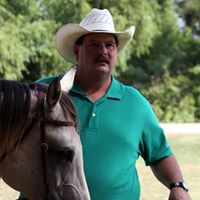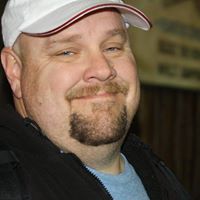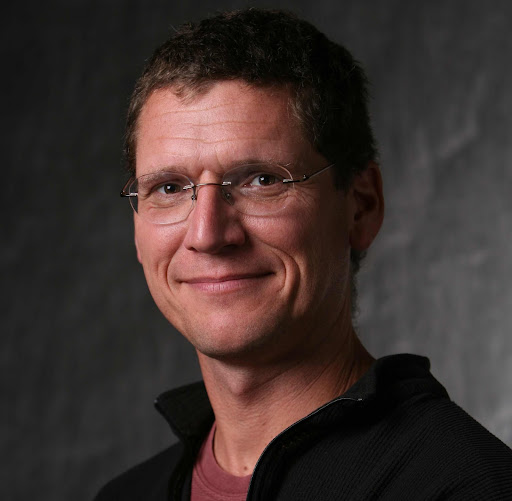Kevin J Rhoads
age ~53
from Chestnut Hill, MA
- Also known as:
-
- Kevin James Rhoads
- Kevin James Rhodes
- Kevinj Rhoads
- Milagros L Ong
- Phone and address:
-
629 Hammond St UNIT E111, Boston, MA 02467
(916)7998159
Kevin Rhoads Phones & Addresses
- 629 Hammond St UNIT E111, Chestnut Hill, MA 02467 • (916)7998159
- 1055 Beacon St, Brookline, MA 02446 • (617)8790406
- 107 Whitethorne Dr, Moraga, CA 94556 • (510)6936282
- 251 Brazilian Cir, Port Saint Lucie, FL 34952 • (772)3361725
Work
-
Company:Kevin g. rhoads engineering, inc. consulting1989
-
Position:Professors rose medical implants, professor donald sadoway molten salts electrochemistry laboratory
Education
-
School / High School:Dartmouth College Tuck School of Management in EntrepreneurshipJun 2004
Us Patents
-
Method For Characterizing Coating And Substrates
view source -
US Patent:6377039, Apr 23, 2002
-
Filed:Nov 13, 1998
-
Appl. No.:09/191668
-
Inventors:Neil J. Goldfine - Newton MA
Kevin G. Rhoads - Andover MA
Karen E. Walrath - Arlington MA
David C. Clark - Arlington MA -
Assignee:Jentek Sensors, Incorporated - Waltham MA
-
International Classification:G01N 2772
-
US Classification:324232, 32420717, 324227, 324230, 324233, 324239
-
Abstract:A system for characterizing coatings and substrates of a material under test. A sensor is positioned against a coated sample which is to be measured to obtain phase and magnitude measurements. Penetration depth of the magnetic waves of the sensor is a function of frequency. Measurements are made at each of a plurality of signal frequencies. The measured phase and magnitude data is applied with respect to a frequency independent parameter, such as conductivity, using a grid method. The conductivities of the coating and the substrate are determined by the limits of conductivity with respect to frequency. With the assumed conductivities of the coating and substrate, the sensor is once again placed over the material, and coating thickness and lift-off are determined. By examining the coating thickness versus frequency the accuracy of the measurement can be determined, since actual coating thickness does not vary with frequency in the material. Through iterative approximations, conductivity can then be accurately determined.
-
Active Method And System Of Establishing Electrical Contact
view source -
US Patent:7166853, Jan 23, 2007
-
Filed:Sep 11, 2002
-
Appl. No.:10/241307
-
Inventors:Kevin G. Rhoads - Andover MA, US
-
Assignee:Varian Semiconductor Equipment Associates, Inc. - Gloucester MA
-
International Classification:G05F 3/04
-
US Classification:25049221, 323355, 323305, 118723 R, 257357, 257355, 257356, 438212, 438223
-
Abstract:A system for electrically contacting a semiconductor wafer during implanting of the wafer includes one or more pairs of closely spaced contacts located adjacent the semiconductor wafer and a driving circuit connected to the contacts to provide a discharge from one contact to the semiconductor wafer and from the semiconductor wafer to the other contact of each pair of contacts. The contacts can be spaced apart from the wafer and the tips of the contacts closest to the wafer may have sharp points to aid in the establishment of corona at lower drive voltages. Alternately, the contacts may be rounded and may contact the wafer. The driving circuit may be adapted from a pulsed discharge circuit, such as a Kettering ignition circuit, a capacitance discharge ignition circuit, or a blocking oscillator circuit. Alternately, the driving circuit may be adapted from a continuous discharge circuit, such as a Tesla coil circuit.
-
Electrostatic Clamping Of Gallium Arsenide And Other High Resistivity Materials
view source -
US Patent:20020114124, Aug 22, 2002
-
Filed:Nov 2, 2001
-
Appl. No.:10/001025
-
Inventors:Kevin Rhoads - Andover MA, US
Grant Larsen - Gloucester MA, US -
Assignee:Varian Semiconductor Equipment Associates, Inc.
-
International Classification:H01H001/00
-
US Classification:361/234000
-
Abstract:A method for electrostatic clamping of a high resistivity workpiece includes the steps of positioning a high resistivity workpiece on a clamping surface of an electrostatic clamp, the electrostatic clamp including electrodes underlying and electrically isolated from the clamping surface, and applying AC clamping voltages to the electrodes for electrostatically clamping the workpiece in a fixed position on the clamping surface. The AC clamping voltages have a frequency in a range of about 0.00175 Hz to 10 Hz and more preferably have a frequency in a range of about 1 Hz to 6 Hz.
-
High Accuracy Calibration-Free Electrical Parameter Measurements Using Differential Measurement With Respect To Immersion Depth
view source -
US Patent:54898498, Feb 6, 1996
-
Filed:Mar 14, 1994
-
Appl. No.:8/212478
-
Inventors:Donald R. Sadoway - Belmont MA
Kevin G. Rhoads - Andover MA
Naomi A. Fried - Cambridge MA
Susan L. Schiefelbein - Boston MA -
Assignee:Massachusetts Institute of Technology - Cambridge MA
-
International Classification:G01N 2702
-
US Classification:324447
-
Abstract:An apparatus and method for measuring electrical parameters of a medium such as electrical conductivity and dielectric constant between a pair of electrodes are disclosed. The medium can be a liquid, gas, powder, etc. , and the electrodes can be coaxial metallic circular cylinders. To compute electrical conductivity, the device is immersed in the medium to an immersion depth and the conductance across the electrodes is determined. The measurement is repeated at at least one additional immersion depth. By obtaining a differential conductance measurement with respect to the immersion depth, the effects of fringe conductances are eliminated from the measurement. The device can also be used to determine dielectric constant of the material by obtaining a differential capacitance measurement with respect to immersion depth. The device need not be calibrated by performing resistance measurements in a known standard solution. Also, because the electrodes can be purely metallic and include no dielectric material, the device can be used to perform measurements in highly corrosive media whose compositions would be altered upon contact with dielectric materials.
-
Surface Deactivateable Tag
view source -
US Patent:55107702, Apr 23, 1996
-
Filed:Mar 30, 1994
-
Appl. No.:8/220089
-
Inventors:Kevin G. Rhoads - Andover MA
-
Assignee:Checkpoint Systems, Inc. - Thorofare NJ
-
International Classification:G08B 13187
-
US Classification:340572
-
Abstract:A security tag used with an electronic security system comprises a dielectric substrate having first and second opposite principal surfaces and a resonant circuit capable of resonating at a frequency within a detection frequency range. The resonant circuit is formed, in part, by a first conductive area on the first substrate surface and a second conductive area on the second substrate surface, the two conductive areas being generally aligned with one another to establish a capacitor with the substrate therebetween forming the capacitor dielectric. A third conductive area is provided on one of the principal substrate surfaces proximate to but not electrically connected to one of the two capacitor plates. The third conductive area is electrically connected to the other capacitor plate. A portion of the third conductive area is spaced from a portion of the one capacitor plate by a predetermined minimum distance whereby upon the application of electromagnetic energy to the tag at a frequency generally corresponding to the resonant frequency of the resonant circuit and at or above a predetermined minimum energy level, an electric arc extends between the spaced portions of the third conductive area and the one capacitor plate creating a persistent conductive bridge which connects the two plates of the capacitor in a short circuit.
Resumes

Delivery Devops Lead
view sourceLocation:
Somerville, MA
Industry:
Computer Software
Work:
Algorithmics since Jun 2011
Integration Engineer
Lockheed Martin Jul 2007 - Jun 2011
Member Engineering Staff
Pegasystems May 2006 - Aug 2006
Intern
Anteon May 2005 - Jul 2005
Summer Intern
Integration Engineer
Lockheed Martin Jul 2007 - Jun 2011
Member Engineering Staff
Pegasystems May 2006 - Aug 2006
Intern
Anteon May 2005 - Jul 2005
Summer Intern
Education:
Rensselaer Polytechnic Institute 2003 - 2007
BS, Electrical Engineering
BS, Electrical Engineering
Skills:
Testing
Linux
Software Engineering
Software Development
Integration
Unix
Java
C++
Sql
Quality Assurance
Python
Matlab
Systems Engineering
Project Management
Windows 7
Microsoft Office
Lotus Notes
Laboratory Skills
Windows Xp Pro
Circuit Design
C
Basalmiq
Shell Scripting
Linux
Software Engineering
Software Development
Integration
Unix
Java
C++
Sql
Quality Assurance
Python
Matlab
Systems Engineering
Project Management
Windows 7
Microsoft Office
Lotus Notes
Laboratory Skills
Windows Xp Pro
Circuit Design
C
Basalmiq
Shell Scripting
Interests:
Economic Empowerment
Civil Rights and Social Action
Politics
Education
Poverty Alleviation
Science and Technology
Human Rights
Health
Civil Rights and Social Action
Politics
Education
Poverty Alleviation
Science and Technology
Human Rights
Health
Languages:
English
Spanish
Spanish

Integration Engineer At Algorithmics
view sourceLocation:
Greater Boston Area
Industry:
Financial Services

Director Of Instruction
view sourceLocation:
Brookline, MA
Industry:
Sports
Work:
Harvard University
Head Men's and Women's Golf Coach
Harvard University
Head Women's Golf Coach
Country Club
Director of Instruction
Pga of America Sep 2001 - Feb 2003
Instructor
Head Men's and Women's Golf Coach
Harvard University
Head Women's Golf Coach
Country Club
Director of Instruction
Pga of America Sep 2001 - Feb 2003
Instructor
Education:
University of California, Los Angeles 1990 - 1995
Bachelors, Bachelor of Arts, History
Bachelors, Bachelor of Arts, History
Skills:
Teaching
Sports
Event Planning
Sports Management
Coaching
Sports Marketing
Public Speaking
Fundraising
Higher Education
Event Management
Sports Coaching
Community Outreach
Social Media
Research
Sports
Event Planning
Sports Management
Coaching
Sports Marketing
Public Speaking
Fundraising
Higher Education
Event Management
Sports Coaching
Community Outreach
Social Media
Research

Co-Founder
view sourceLocation:
P/O Box 302, Lyme, NH
Industry:
Medical Devices
Work:
Kevin G. Rhoads Engineering, Inc since Nov 1989
Principal
Dartmouth College - Hanover, NH Jan 2003 - Jan 2013
Engineer, Lynch Rocket Laboratory
Varian Semiconductor - Gloucester, MA. 1999 - 2002
Principal EE, Team Leader for Ion Implanter Electro-Static Platen
MIT - Cambridge, Massachusetts Sep 1983 - Jun 2002
Instructor
Jentek Sensors, Inc - Waltham MA Jun 1994 - Oct 1999
Engineer
Principal
Dartmouth College - Hanover, NH Jan 2003 - Jan 2013
Engineer, Lynch Rocket Laboratory
Varian Semiconductor - Gloucester, MA. 1999 - 2002
Principal EE, Team Leader for Ion Implanter Electro-Static Platen
MIT - Cambridge, Massachusetts Sep 1983 - Jun 2002
Instructor
Jentek Sensors, Inc - Waltham MA Jun 1994 - Oct 1999
Engineer
Education:
Massachusetts Institute of Technology 1969 - 1989
Ph.D., Electrical Engineering and Computer Science
Ph.D., Electrical Engineering and Computer Science
Skills:
Mathematics
Optics
Physics
Numerics
Measurement Systems
Signal Conditioning
Systems Engineering
Electromechanics
C
Analog Circuit Design
8051 Microcontroller
Algorithms
Numerical Simulation
Quasistatic Field Theory
Numerical Analysis
Matlab
Sensors
Electronics
Modeling
68K Assembly
Image Processing
Engineering
Continuum Electromechanics
Signal Processing
Embedded Systems
Labview
Manufacturing
Design of Experiments
Electrical Engineering
Vacuum
Failure Analysis
Electrical Field Theory
Robotics
Semiconductors
Simulations
8051 Assembly
X86 Assembly
Research
Machine Learning
Metrology
Electro Mechanical
High Performance Computing
R&D
Materials Science
Systems Programming
Optics
Physics
Numerics
Measurement Systems
Signal Conditioning
Systems Engineering
Electromechanics
C
Analog Circuit Design
8051 Microcontroller
Algorithms
Numerical Simulation
Quasistatic Field Theory
Numerical Analysis
Matlab
Sensors
Electronics
Modeling
68K Assembly
Image Processing
Engineering
Continuum Electromechanics
Signal Processing
Embedded Systems
Labview
Manufacturing
Design of Experiments
Electrical Engineering
Vacuum
Failure Analysis
Electrical Field Theory
Robotics
Semiconductors
Simulations
8051 Assembly
X86 Assembly
Research
Machine Learning
Metrology
Electro Mechanical
High Performance Computing
R&D
Materials Science
Systems Programming
Languages:
English

Kevin Rhoads
view source
Kevin Rhoads
view sourceSkills:
Microsoft Office
Research
Microsoft Word
Leadership
Research
Microsoft Word
Leadership

Kevin Rhoads
view sourceLocation:
Boston, MA
Name / Title
Company / Classification
Phones & Addresses
EXPRESS UTILITY SYSTEMS, LLC
EXPRESS PLUMBING SYSTEMS, LLC
Kevin Rhoads Golf Sponsorship LLC, The
Service,Participation On 1997 Profession · Professional Golf Competition
Service,Participation On 1997 Profession · Professional Golf Competition
107 Whitethorne Dr, Moraga, CA 94556
Same, Moraga, CA 94556
Same, Moraga, CA 94556
Classmates

Kevin Rhoads
view sourceSchools:
Findlay High School Findlay IL 1984-1988
Community:
Robert Hilsabeck, Barbara Griffin, Larry Johnson

Kevin Rhoads
view sourceSchools:
Seaman High School Topeka KS 1994-1998
Community:
Brandi Prchal, Ray Winter, Crystal Filbert, Cindy Hardten, Jennifer Myrick, Jessie Allison, David Trimble, Victoria Washburn, Lillian Rooney, Steven Strobel

Kevin Rhoads
view sourceSchools:
Estes Hills Elementary School Chapel Hill NC 1990-1994
Community:
Clare Woolley, Madison Hayes, Connie Wiel, Christianne Vorbeck, Ashley Smith, Hansoo Lee, Latoya Rone, Lauren Elfers, William Hayes, Lauren Williams, Gabrielle Roy

Kevin Rhoads, Deer Park H...
view source
Kevin Rhoads, Foxboro Hig...
view source
Kevin Rhoads | Trabuco Hi...
view source
Estes Hills Elementary Sc...
view sourceGraduates:
Kevin Rhoads (1990-1994),
Lauren Elfers (1990-1994),
William Hayes (1993-2006),
Catherine Russell (1995-2003)
Lauren Elfers (1990-1994),
William Hayes (1993-2006),
Catherine Russell (1995-2003)

Poway High School, Poway,...
view sourceGraduates:
kevin rhoads (1972-1976),
amos thompson (1983-1987),
Cameron Earnshaw (1968-1972),
Elisabeth Diaz (2007-2011),
David Jeffo (1988-1992)
amos thompson (1983-1987),
Cameron Earnshaw (1968-1972),
Elisabeth Diaz (2007-2011),
David Jeffo (1988-1992)

Kevin Rhoads
view source
Kevin Rhoads
view source
Kevin Rhoads
view source
Kevin Rhoads
view source
Kevin B. Rhoads
view source
Kevin Rhoads
view source
Kevin Rhoads
view source
Kevin Rhoads
view sourceMyspace
Googleplus

Kevin Rhoads
Work:
Siena College - Associate Professor (2001)
Education:
University of Delaware - Chemistry, University of Maryland, College Park - Chemistry, Tennessee Technological University - Chemistry

Kevin Rhoads
Lived:
Albany, NY 12211
Newark, DE
San Francisco, CA
Newark, DE
San Francisco, CA
Work:
Siena College

Kevin Rhoads
Education:
South Eastern Technical Institute - Journeymen/Master Plumber, Foxborough High school

Kevin Rhoads

Kevin Rhoads

Kevin Rhoads

Kevin Rhoads

Kevin Rhoads
Youtube
Get Report for Kevin J Rhoads from Chestnut Hill, MA, age ~53












